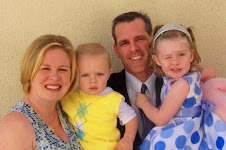After the breakup of the Soviet Union, organized crime took a foothold in many of the former republics that suddenly had porous borders. The black market became endemic and the unemployment rate for women soared to approximately 80%.[3] In Serbia and Montenegro (of the former Yugoslavia), approximately 30 to 50 percent of females in prostitution were victims of trafficking, of that number, one-half were children aged 16 to 18.[4] Given the combination of the post-conflict period and subsequent changes in the society, traffickers have made Serbia a source, transit, and destination country for women and girls trafficked transnationally and internally for the purpose of commercial sexual exploitation.[5]
Women who are trafficked for sexual exploitation are mercilessly beaten, raped, tortured (mentally, physically, and emotionally) and recklessly killed. If the women are discovered and “rescued” by the authorities, they are usually deported back to their country of origin as “foreign trash” and re-victimized. After repatriation, these women are back where they began except that in addition to their low socio-economic status they are now strapped with anxiety and depressive disorders, disfigurement, social stigma, a sense of powerlessness and possibly HIV.
What does this have to do with us in the United States, you may ask? First, these women are human beings with a desire to live a happy, healthy life and they are victims of human rights violations that are monstrous. Second, for those of you who need immediate connections with your own life and your community, these women are being transported to our country to be bought, sold, and raped. What does that do to the social fabric and democratic landscape of our country? Third, in an ever growing environment of globalization, we have a responsibility to each other's well-being because, as the Dalai Lama says, when we hurt others we hurt ourselves.
Community is the key. We have community in all of our lives. Friends, family, school, clubs, jobs, church, etc. Those communities help us live longer lives. According to Robert Putnam's research in the book "Bowling Alone", lower mortality rates are related to membership in voluntary groups, church attendance, holding parties at home, participating in sports groups, attending union meetings, etc. Even as non-researchers, we can see and feel the benefits of community. When you are sick and someone brings you hot soup (Pho for me, please!). When you just need to vent and someone listens and tells you that you are "not crazy" (Thanks, Audra!). When there is a party and you are on the guest list. These are small but universal examples of community. We all need it.
Women who have been trafficked, who are being trafficked, and could be trafficked ARE our community. They are part of the fabric of the new global community. To use this analogy, the fabric of our community is only strong when all of the fibers are strong. If our world were signified by a blanket, how many of us would keep that blanket with all of it's holes and threadbare spots? How warm would any of us be with so many gaps in the blanket? It is reparable and cannot just be tossed in the trash. We can start to mend the fabric and it will benefit us all.
Next time:
Serbian Sex Trafficking Project?
[1] Kevin Bales. Disposable People: New Slavery in the Global Economy. Berkeley: University of California Press, 1999.
[2] “Sex workers and clients,” UNAIDS,
[3] Victor Malarek. The Natashas: Inside the New Global Sex Trade. New York: Arcade Publishing, 2003.
[4] Bureau of Democracy, Human Rights, and Labor ,“Country Reports on Human Rights Practices - 2006,” U.S. State Department, March 6, 2007 <>
[5] U.S. State Department, “Trafficking in Persons Report: June, 2007”, U.S. State Department
Blogroll Me!





No comments:
Post a Comment